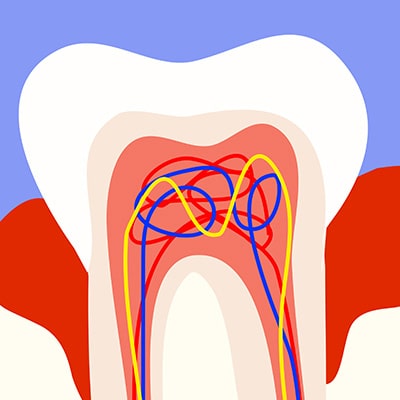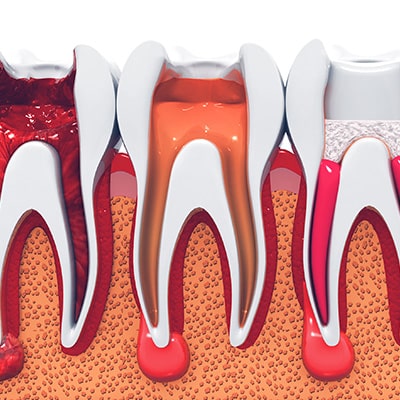Conservative care
Decayed teeth require rapid intervention to ensure your oral health is maintained at its best. At each level of decay of the tooth, we can use different means to delay and if possible never go to the next level of decay.

Tooth decay levels
There are several levels of decay in a tooth:
- The healthy, living tooth
- The living tooth which is decayed and / or which already has a filling
- The devitalized tooth
- The tooth that requires to be extracted
For the living tooth (1), the prophylaxis associated with the establishment at home of a controlled plaque control, will keep the tooth free from needing care/treatment.
Request a dental check-up
CONTACT US
Decayed teeth
For decayed or dental care teeth that are no longer waterproof (2), it is only when the decay and the old fillings are removed (if this is the case), that we will know the treatment to be performed.
Two situations may be observed:
- If the cavity is small, a resin (direct composite) is perfectly suitable and is aesthetic. We have made the ecological choice to no longer use amalgam (since 1997).
- When the volume of dental tissue destroyed is large, ceramic inlays become interesting alternatives to reconstructions traditionally made from composites.

Devitalised teeth
For devitalized teeth (3) numerous publications have shown that if these teeth are strengthened by a crown, they will remain in the mouth longer. We are thus delaying the time of extraction. This strengthening can only be done on a clinically correct root treatment.
The plumped teeth must imperatively be reconstituted with a suitable material associated with tenons in the root or by an inlay-core.
These root anchors can be achieved in two ways:
- Stride reconstruction: Direct method with a composite material associated with fiberized root posts.
- Casting reconstruction: Indirect method with a cast metal post made in the prosthesis laboratory.

Teeth that require to be extracted
When a tooth is extracted from the mouth (4), it is necessary to replace it in order to avoid inconvenient consequences. The space left in your bite by a missing tooth can overload neighbouring teeth and even displace them. These situations can, in most cases, be avoided by prompt treatment.
The extracted tooth can be replaced in a fixed or removable way, according to your wishes.
Each solution with its advantages and disadvantages as well as a cost estimate of said solution will be explained to you.


